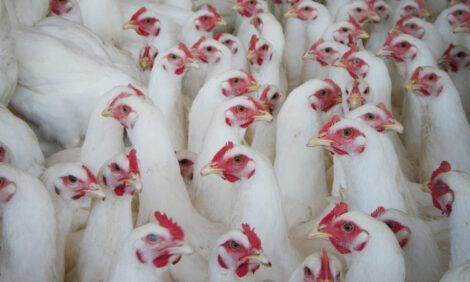



Finalisation of FSIS's Modernisation of Poultry Slaughter Inspection Rule
Dr Ashley B. Peterson, vice president of scientific and regulatory affairs for the US National Chicken Council, explains what the new Rule means for poultry production processes and food safety.The Modernization of Poultry Inspection Final Rule was published in the Federal Register on 21 August 2014, a mere 937 days after it was proposed. During that time, the chicken industry was negatively portrayed by the media, consumer groups and others spreading many misconceptions about the inspection system and chicken processing in general.
Also during that time frame, the chicken industry remained steadfast – continuing to support a modernised poultry inspection system that focuses more on actual food safety issues that could affect public health, rather than organoleptic and quality issues.
The New Poultry Inspection System (NPIS), which is the modernised poultry inspection system included in the Final Rule of 21 August may play a role in improving food safety but that remains to be seen. The final rule is quite different than the proposed rule in various areas including participation, food safety requirements, and line speeds.
Many of these aspects were never commented on by those on either side of the rule since they were never included in the proposed rule. Regardless of this fact, below are some of the main topics included in the final rule that will impact the industry. First, the new rule is completely voluntary for traditional establishments.
If establishments are satisfied operating under traditional inspection, they can continue to operate as is. If establishments are currently one of the 20 HIMP pilot plants, they must opt into NPIS or their line speeds will be capped at 140 birds per minute. Current HIMP establishments have until 23 February 2015 to notify their District Offices of their interest in participating in NPIS.
If establishments currently operate under traditional inspection and choose to opt into NPIS, a US Department of Agriculture (USDA) carcass inspector (CI) will be stationed just before the chiller to conduct on-line bird-by-bird inspection ensuring that all birds have been properly processed.
Additionally, each line will have an off-line inspector (VI) to conduct verification activities. Establishments will now be required to hire and train on-line sorters (replacing current USDA inspectors) to remove any quality defects from carcasses, thereby allowing Food Safety and Inspection Service (FSIS) inspectors to focus more on food safety-related parameters.
These are significant changes from the current inspection system that will require substantial investments on behalf of the chicken industry. Traditional establishments have until 23 February 2015 to notify their District Offices of their interest in participating in NPIS.
These establishments can opt into NPIS after 23 February 2015 but they will not be included in the first implementation wave. With regards to food safety, there are several new requirements that all establishments must have in place in the upcoming months regardless if they continue to operate under traditional inspection or participate in NPIS.
For example, all establishments will be required to test for pathogens both pre- and post-chill for every 22,000 birds processed. In that same light, establishments are no longer required to use generic E. coli as an indicator organism but are required to select and validate an alternative indicator of process control (examples include aerobic plate count, Enterobacteriaceae and others).
Additionally, establishments must develop and implement written procedures to address contamination during the slaughter process. It is inevitable that contamination may occur during the evisceration process but according to the Final Rule, establishments will need to focus on prevention of contamination rather than rely on their multi-hurdle approach to minimise any downstream risks.
Large establishments had until 19 November 2014 to implement the new requirements including the written program and testing requirements. Small establishments had until 19 December 2014 and very small establishments have until 17 February 2015, to have these food safety-related parameters in place.
The proposed rule would have allowed all chicken establishments to operate at 175 birds per minute – a speed that has proven to be safe for 15 years in the US and in major poultry-producing countries around the world. Unfortunately, USDA capped the industry at 140 birds per minute in the final rule – the maximum speed at which traditional establishments can currently operate.
With the line speed incentive gone, it is very difficult to estimate how many chicken establishments will opt into NPIS. Regardless of the inspection system in place, the chicken industry remains committed to ensuring a safe, wholesome, and abundant supply of poultry products for both domestic and international markets.
January 2014











